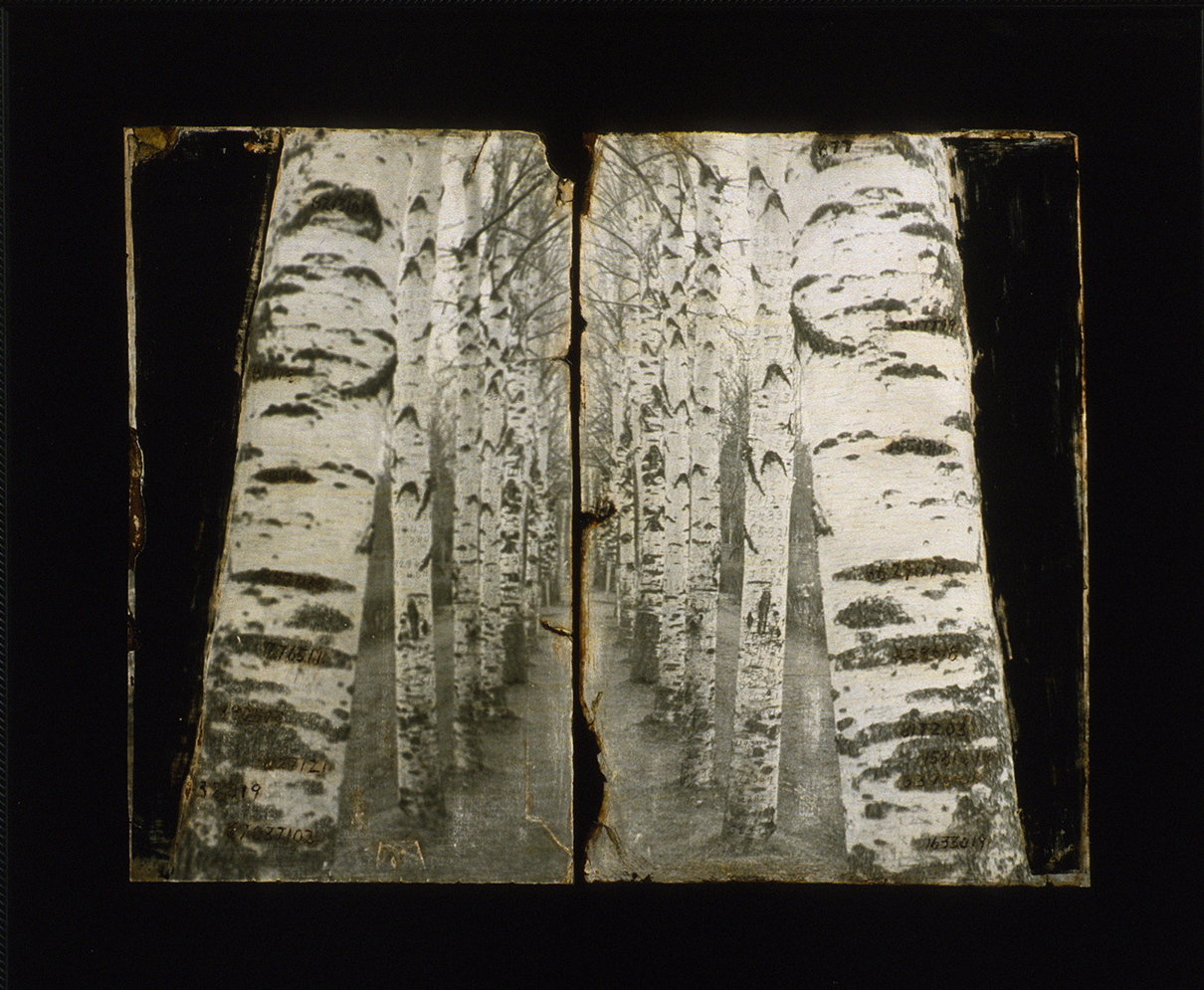Siberian Elegy
“In ‘Siberian Elegy,’ Rossi illuminates Stalin’s Reign of Terror and the oppression of the poet’s voice through an installation of photographs, video, mixed media work, sculpture and poetic texts focusing especially on the life and exile of Jewish poet, Osip Mandelshtam. Mandelshtam’s wife, Nadezhda, saved her husband’s poems by hiding them in the burrowed out handles of her pots and pans, sewing them into pillow cases and memorizing thousands of words for decades following her husband’s disappearance.”
Review by Jay Miskowiec
Artist Linda Rossi is known for haunting multi-installations that combine digital and straight photography, film, video, sculpture and text to reveal the poetic intersections of art, history and science. Her signature work is layered, rich in symbols and associations, always making evident the extensive research of her subject matter. Over the past decade Rossi has explored compelling themes of exile, producing three major bodies of work: “Siberian Elegy,” (exile of the poet/artist); “Print Series,” (exile of women in Tehran from knowledge or education); and “Sound Suspended,” (exile of nature from civilization). She has exhibited her work regionally and internationally, and has traveled extensively for her projects in Africa, Russia, Western and Eastern Europe, and South America.
In “Siberian Elegy” Rossi illuminates Stalin’s Reign of Terror and the oppression of the poet’s voice through an installation of photographs, video, mixed media work, sculpture and poetic texts focusing especially on the life and exile of Jewish poet, Osip Mandelshtam. Mandelshtam’s wife, Nadezhda, saved her husbands poems by hiding them in the burrowed out handles of her pots and pans, sewing them into pillow cases and memorizing thousands of words for decades following her husband’s disappearance.
Rossi mediates our experience in this exhibition through a diverse assortment of works, using words hidden in domestic items on the stove as a central metaphor. She presents a video montage about the poet’s lives and the surrounding landscape inside an oven placed at the head of a table setting, acknowledging the spirit that persists even during genocide. She notes that prisoners in the camps wrote extensively about nature – wildlife surrounding the camps represented dreaming, a longing for wildness, or an uncontrolled vision existing beyond darkness. Rossi’s inclusion of images and footage depicting wild spaces and non-human species into Siberian Elegy tempers its despair with the truth of nature’s unity – a truth that remains no matter the challenge.
Her didactic text, reference to museum display, and sculptural objects allude to the Russian Art influence of Social Realism dictated by the government during Stalin’s Reign, a time when domestic items such as wallpaper, textiles and dishes were infused with propaganda to influence the proletariat. Rossi always seeks to engender a civic response to her work. “Siberian Elegy” is a powerful testimonial about the enduring spirit of the Jewish experience and a time when artists risked their lives for their freedom and their art. Rossi demonstrates art’s greatest power –to reconnect what has been severed and align the meaning, truth, and spirit of human experience across time and culture.






































